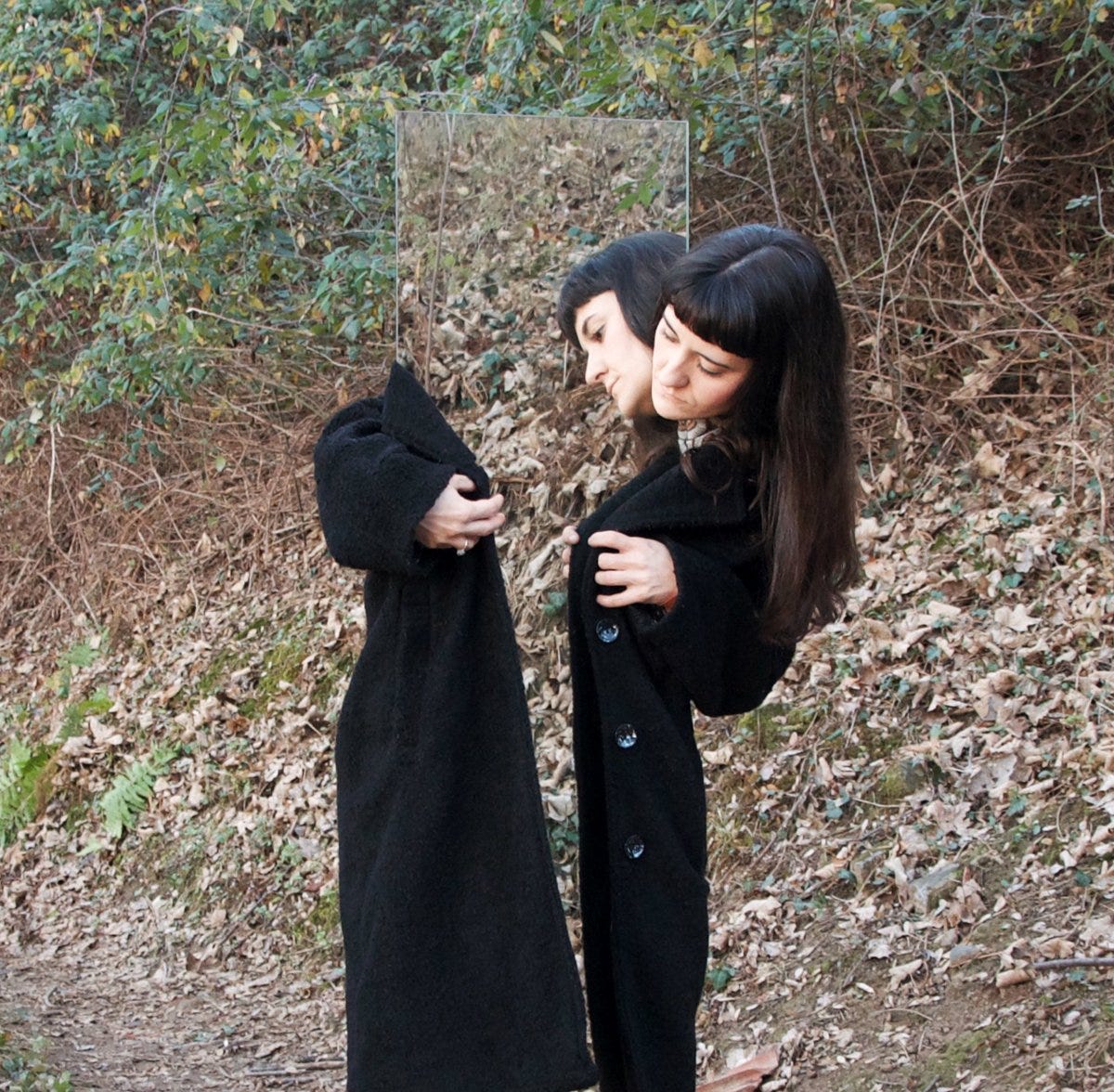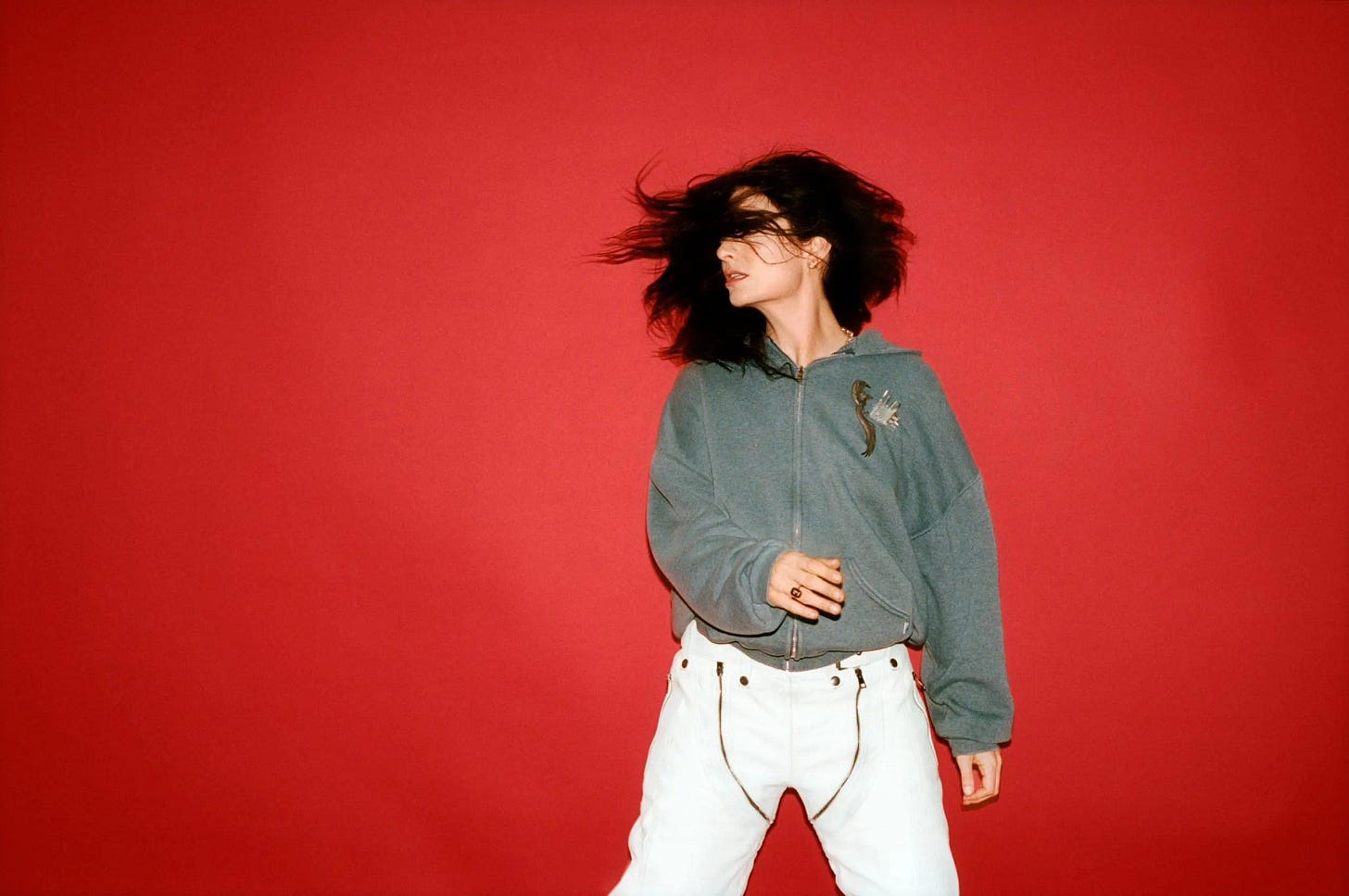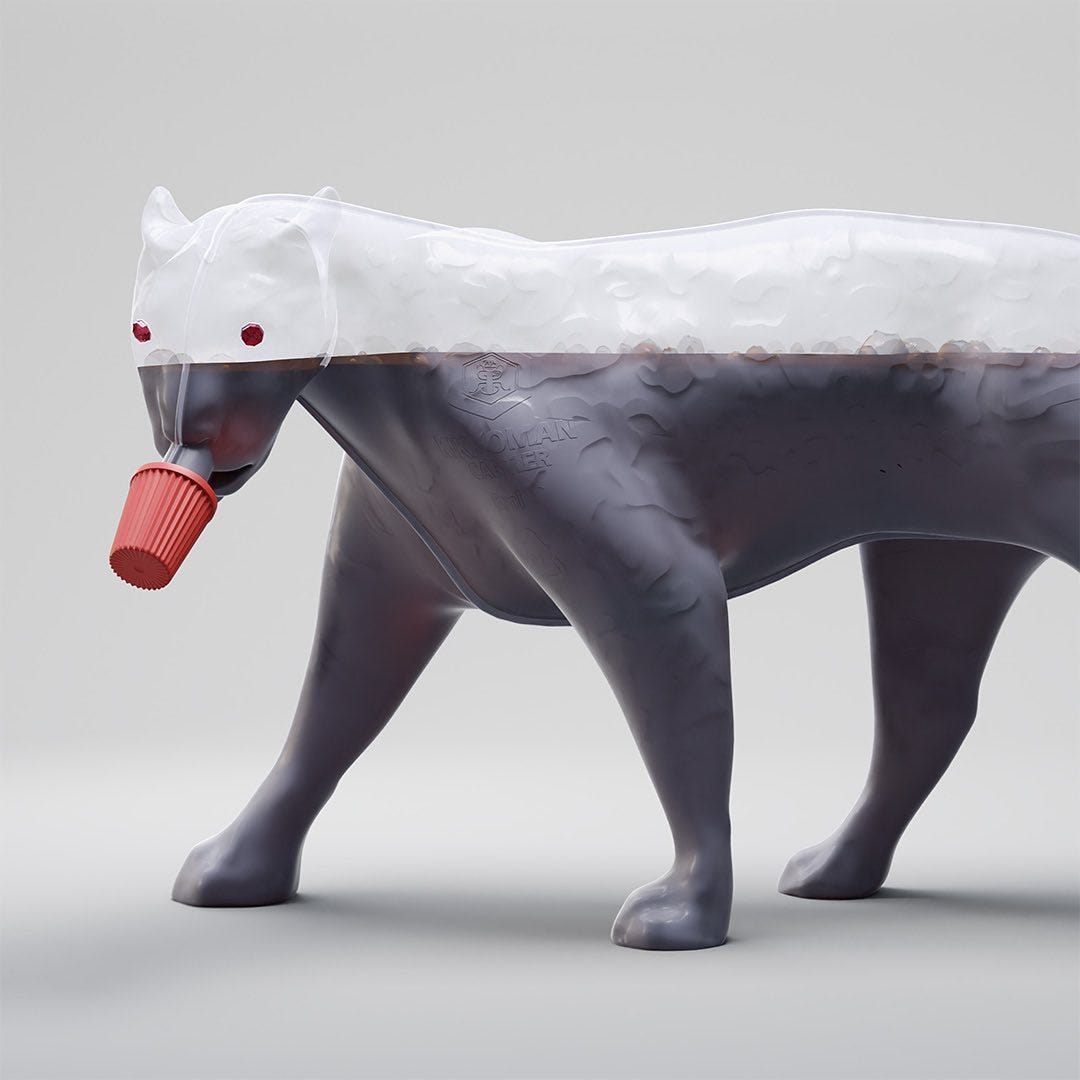The Hyper-Visibility of The Star Making Machine
lorde, how the sausage is made and who makes it
If you’ve taken up residence on a certain side of the internet, I don’t need to tell you that on Tuesday evening, Lorde, New Zealand’s leading pop import, gave her debut performance of “What Was That” in New York’s Washington Square Park, a single she has been teasing off of her highly anticipated fourth album. Despite being a fan of the musician, Lorde’s span of marketing did not reach my corner of the web. My social media algorithm did not notify me when she announced the surprise concert, when she cancelled it due to not having a permit, and when she – miraculously! – played the song live in the park anyway to a crowd of hundreds. As it turned out, I was busy in Brooklyn attending the FLO concert, and caught up on clips of the performance afterward.
I am excited about this new Lorde album. Truly. But, on the heels of the Washington Square Park performance, I am most intrigued by how this new album is being presented to us. Lorde, a musician who has traditionally evaded the circus of the pop star marketing ecosystem, has seemingly locked in, tapping a class of creatives who are quickly becoming responsible for the promotion and branding of our favourite stars. A few days ago, Rachel Seville Tashjian detailed some of the creatives that Lorde has enlisted to bring her new era to market on a guest drop of Emily Sundberg’s Feed Me:
“She’s now working with Terrence O’Connor, the visionary who helped make “Brat” such a marketing success (I believe the Brat wall was his idea). She’s got Taylor McNeill – the cucumber cool genius who put Kendrick in that Martine Rose jacket and little Celine bootcut jeans for the Super Bowl, and did Chalamet’s Bob Dylan cosplay – styling her. Photographer Talia Chetrit, who is making those sublime and nasty images for Phoebe Philo, made her drenched-face single art.”
In addition to teasing production from my personal favourites, Dev Hynes and Rostam, Lorde has also collaborated with Dan Nigro on the new album, a newish-comer whose instrumentation is behind stars like Olivia Rodrigo and Chappell Roan. By tapping creatives who have a demonstrated capacity for catalyzing the neurons of our ever-changing media system, Lorde is telling me one thing: she wants to be ‘it’ this summer.
This is significant for a pop star who previously appeared to be building towards ‘the Frank Ocean path’ of fan engagement: dropping projects with little publicity, letting your fans do the talking, not really caring about commercial or critical success (but getting it anyway), and disappearing for years between music releases.
But now Lorde is doing the talking. She’s even speaking directly to fans via WhatsApp voice notes. How did we get here?

Lorde’s Pure Heroine, stacked with jams like “Buzzcut Season” and “A World Alone,” remains one of the most derailing (complimentary) debuts of the 2010s, exploring adolescence, materialism, and class from the studied lens of a sixteen-year-old suburbanite. Much of pop music changed after that. In today’s pop music landscape, the vivid introspection that chimes closer to literary prose than lyrics and the nymph-like vocal affects that have been charmingly described as ‘cursive singing’ can all be traced back to Lorde.
The impact of her follow-up album, Melodrama, is still heard today. The album’s an evocative reclamation of synth pop, bolstered by crash-out-cry-on-the-dance-floor ballads for those raised on Robyn. Melodrama, an album that showcased the early genius of Jack Antonoff before he became the most run-through pop producer of our generation (also complimentary), was the only album by a woman nominated for Album of the Year at the 2018 GRAMMYs. Due to the academy’s glaring oversight, Lorde declined her invitation to perform at the ceremony. For context, SZA’s CTRL, Big Thief’s Capacity, and Charli xcx’s Pop 2 all came out the same year. She had a point.
Then, in the summer of 2021, when vaccines began to roll out for COVID-19, she released Solar Power, and… nobody moved. It’s stripped-back poetry and bullet-journalistic prose didn’t connect for the majority of her fans, who, like me, were ready to rage, and not expecting such a steep departure from the sonic undertones that she built a community of fans around. But what the album lacked in bops, it made up for in honesty. The tender vulnerability of a star who is figuring out how to be an adult is palpable, even if it doesn’t make you want to hit replay.
I have returned to the blissful, beached-out ballads of Solar Power since the pandemic to see if it was a ~tImInG tHiiNg~, and can confirm that I still don’t really love it. Despite not resonating with the album as much as her previous releases – “Stoned at The Nail Salon,” “Mood Ring,” and that one line in “Solar Power” where she says she’s ‘like a prettier Jesus’ excluded and marked safe – I will happily overlook gaps in musicality for artistry, which, to be clear, Lorde has both of in spades. But, to me, she’s always been an artist first. An astute observer of the world with a knack for the pen. She just happens to channel her gift through pop music.
Today, her uncharacteristically enthusiastic embrace of the new pop star marketing machine might be due to her previous album's inability to ignite passion and move the culture. But, so far, the aesthetics feel borrowed and fit her oddly. The visuals for “What Was That,” a handheld camera capture that fuses live footage from her Washington Square Park event, are meant to look scrappy. But with Lorde’s complex history with meeting her fans where they are at, and the fact that, well, she isn’t a ‘scrappy’ artist but, instead, an incredibly intentional, GRAMMY-winning global pop magnate, it’s hard to metabolize this new stunty approach against her presumed resources. Even though no one owns ‘D.I.Y.,’ the vision has yet to cohere for me. But, in the words of Dolly Parton: “It costs a lot to look this cheap.”
Not all artists are great marketers, nor should they be. I think it’s rather unique for someone to know how to make a beautiful thing and how to communicate it. But, as we’ve seen with what Charli xcx has achieved with the BRAT summer of 2024 and what Timothée Chalamet has done with his Oscar campaign, sometimes there is art to be made within the marketing. And if you aren’t a marketing genius yourself, why not outsource it?
It’s exciting and worth inspection how much the creative and marketing teams of our favourite stars have become stars in their own right. In this new landscape of Instagram captioning, where artists (rightfully) tag all of their collaborators’ handles in a long list of @’s, fans can not only see how the sausage is made but also who is responsible for making it. They can track aesthetics across the other artists the creative team supports. And so can other artists, which works well for the creative job economy, where an Instagram grid is essentially a LinkedIn page.
Fashion has become the most immediate workstream in image making. No one wants to be the star who boldly claims to style themselves, ‘and it shows.’ Danielle Goldberg, the styling mastermind behind the effortlessly chic aesthetic of Ayo Edebiri, Greta Lee, and Laura Harrier, has garnered the following of a macro-influencer and copped a New York Times profile in the process for her work. Dara, the mononymous styling sherpa of Addison Rae and Interview Magazine’s Fashion Director, has also solidified her place within the image making echelon through her referential outfit pulls, her work almost as vital to Rae’s rise as the music itself. Troye Sivan partnered with acclaimed fashion photographer Gordon von Steiner to help architect the creative rollout for his latest (and greatest!) album. I don’t need to tell you about how the partnership between Law Roach and Zendaya benefited both of their careers, and I have already told you about the sorcery of Mr. Zuckerberg’s style team. The hands of the image architects behind the most promising stars are increasingly public. Not only can the public become fans of the creative teams, they can also parse and make links between the sensibilities of stars and those who have a hand in building them, bolding the line between artist and muse.
Since Charli xcx innovated on the promotional model that allowed her to reach audiences with her BRAT roll-out, it’s been fascinating to watch how other stars have tapped her team to replicate the success. In addition to working on Lorde’s upcoming release, Terrence O’Connor – the photographer who lensed her Crash album cover – has been tapped to shoot artwork for HAIM’s newest singles. Aidan Zamiri, Charli xcx’s music video director for “360” and “Guess,” went on to direct the visuals for Billie Eilish’s “Birds of a Feather” as well as capture Timothée Chalamet’s Oscar campaign for the film A Complete Unknown. Imogene Strauss, Charli’s brilliant stage designer, worked on Clairo’s intimate and beautiful Charm tour set. Perhaps, it’s always been this way. These collaborators and stars aren’t ‘new to this; they’re true to this’ and have been known for their creative genius before the success of BRAT. I am a believer that great work earns an artist the ability to do more great work.
Still, there is a pronounced difference in how aware the casual fan is of the creative team behind the artists they love, which makes the final output feel honest when done in collaboration and manufactured when not. The minimalism of BRAT worked because Charli was authentically swinging from the margins, bringing a niche sensibility to the mainstream in a riot. It will be interesting to watch how many members of our long-standing star network attempt to replicate this shift with the talent they tap. Now that fans have greater knowledge of how the sausage is made, their bullshit meters are more finely tuned than ever.
During the BRAT promotional cycle, Charli xcx appeared on the pop culture podcast Las Culturistas to speak openly about her album, a PR pitstop that many pop stars have since taken to varying degrees of transparency. Regarding some of her past swings at commercial success, the star said that she realized she is “not that girl,” the kind of star who could act and make music in a traditional lane or put on a show like someone she is not. She said that her hardcore fans could never connect to those songs or that persona, claiming that it was as though they could “smell a rat.”
These are wise words for any star attempting to ‘own’ a summer. New York becomes hot and sticky in its warmer months. Trash topples over itself, overflowing on street corners, and the parks become jammed with havoc and humidity. The sounds of rats saturate the city, the subway, the floor apartment of the walk-up, but, in the end, very few of them last the winter.
LOOSEY is a biweekly newsletter about culture, art, technology, and the way we live. If this is something you like, consider subscribing and sharing. Let’s be friends on Instagram.







high key this is a response to Solar Power flopping; Lorde I think wanted that record to be a "moment" and it didn't because its introspective cult leader aesthetic was so out of sorts with the collective depression that Dua Lipa's Future Nostalgia ended up answering with optimistic escapism.
What Was That?'s marketing is giving over correction to the tune of, specifically, the Girl, So Confusing remix. she wants to go viral and knows we're on a collision for nostalgia minded requelisms? sorta 2014 2.0 except the authentic inauthenticity is much more apparent.
Watching Terry circle her on that makeshift podium took me out—absolutely a sausage being made moment.